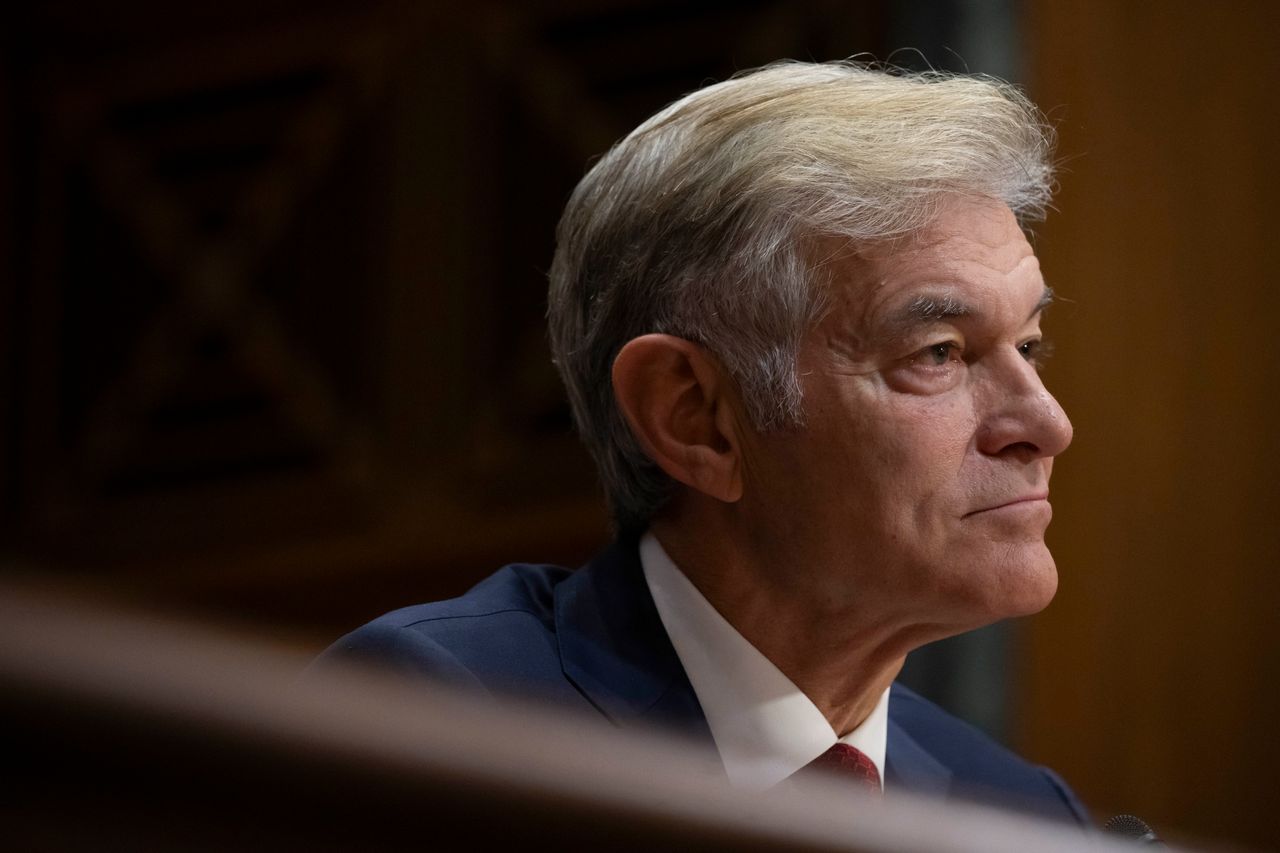| |  | | | | |  | By Megan R. Wilson | - Rural health fund money chase: CMS opens applications the $50 billion initiative, with many red states poised to benefit due to their large rural populations and heightened vulnerability to Medicaid cuts.
- New ACIP members: There are five new members of a vaccine advisory panel ahead of this week’s key meeting on covid, including a number who’ve expressed skepticism about coronavirus vaccines and mandates.
- FDA posts slew of warning letters: The renewed crackdown on pharma advertisements — both on television and the internet — has begun.
Hello, and welcome to Health Brief. I’m Megan Wilson, and I’m tracking what’s moving (and what’s stalling) in health policy, pharma and the politics behind both. Do you have any intel, gossip, tips or scoops? Reach out to me at megan.wilson@washpost.com or on Signal at megan.434. This newsletter is published by WP Intelligence, The Washington Post’s subscription service for professionals that provides business, policy and thought leaders with actionable insights. WP Intelligence operates independently from The Washington Post newsroom. Learn more about WP Intelligence. |  | | Centers for Medicare and Medicaid Services Administrator Mehmet Oz is rolling out the Rural Health Transformation Program. (Craig Hudson/For the Washington Post) | | | |  | The Lead Brief | With $1 trillion in Medicaid cuts looming over the next decade, states are scrambling to grab a piece of the $50 billion Rural Health Transformation Program now being rolled out by the Trump administration. Why it matters: The administration opened the application window for the new program, created as part of the broader One Big Beautiful Bill, but experts say it will come far short of offsetting the huge cuts to Medicaid on the horizon, especially as reports of rural health providers closing ahead of the anticipated Medicaid cuts rise. Many of the hardest-hit areas are expected to be in red or rural states that had previously expanded Medicaid or rely heavily on federal health funding. States have a seven-week period to send in their applications — setting off fresh worries about how, and where, the money might actually flow. Half of the $50 billion will be distributed evenly among states with approved applications. The Centers for Medicare and Medicaid Services has jurisdiction over the other half, and will distribute it to states based on a weighted set of metrics and “applications that reflect the greatest potential for and scale of impact on the health of rural communities.” CMS is not just looking for financial need, they’re looking for a strategic vision. → What’s in the formula? The following factors have the highest weight: - Absolute size of rural population in a state (10 percent)
- Proportion of rural health facilities in the state (10 percent)
- Uncompensated care in a state (10 percent)
- Percentage of state population located in rural areas (6 percent)
- Metrics that define a state as being frontier — areas that have low population density that are also geographically isolated. (6 percent)
- Area of a state in total square miles (5 percent)
There are more than a dozen other categories that will be factored in, some of which include how states approach the Trump administration’s health policy priorities, according to the 124-page document outlining the parameters. For example, states that have submitted or approved waivers to prohibit the use of food stamps to purchase “non-nutritious” foods will score higher than those that don’t. (Those SNAP policies are weighted at 3.75 percent of the overall score.) Let’s break down some of the numbers of the highest-weighted aspects of the applications: States with large rural populations — in sheer numbers and percentage of their populations — are poised to benefit most under the metrics for program funding. Texas leads the nation’s rural population with more than 4.7 million people, representing just 16 percent of its overall population. North Carolina, Pennsylvania, Ohio, Georgia and Michigan follow, each with more than 2.6 million people living in rural areas. While rural populations in California, New York and Tennessee are a smaller part of their states’ total residents, their sheer numbers could keep them competitive in the funding formula. Several states stand out for how rural they are and could rank higher under metrics such as population density or geographic isolation. In Vermont and Maine, more than 60 percent of residents live in rural areas, while West Virginia, Mississippi and Montana also top 50 percent. Alabama and Kentucky — with sizable rural populations and some with higher-than-average hospital closure risk — may also score well across multiple criteria. → National stat: There are about 1,800 rural hospitals around the country, representing 35 percent of all community hospitals, according to a KFF analysis. States with high rural hospital proportions: - States with at least 50 percent rural hospitals: Arkansas, Idaho, Kentucky, New Mexico
- States with at least 60 percent rural hospitals: Iowa, Kansas, Maine, Minnesota, Mississippi, New Hampshire
- States with at least 70 percent rural hospitals: Alaska, Montana, Nebraska, South Dakota, North Dakota, Vermont and Wyoming
These numbers, sourced from KFF, don’t include other providers in rural areas such as community health clinics. What can the money be used for?: States must show how they’ll use the money to build a sustainable rural health system, and must touch on multiple areas, including: recruiting health care workers, investing in value-based payment models that link physicians payments to outcomes, and bolstering mental health and substance use disorder treatment. The administration also emphasizes the importance of various types of health tech investments, such as artificial intelligence, remote patient monitoring, and devices that can improve overall care and manage chronic diseases. Some potential snags: - The money is meant to support rural health care, but it does not have to go directly to rural hospitals or providers — states can give technology companies, for example, some of the funding if applications are approved.
- Providers don’t have to be located in rural areas to get the money, prompting concerns from some advocates that funds could go to well-heeled or well-connected health systems or facilities.
| | | |  | Immunization Update | Health and Human Services Secretary Robert F. Kennedy Jr. expanded the vaccine advisory committee again on Monday, adding five new members to the Advisory Committee on Immunization Practices, bringing the panel to 12 total. → The timing matters: The ACIP is meeting this week to review key vaccine recommendations on covid-19 boosters, hepatitis B, RSV and MMRV vaccines. This reshaped panel’s decisions could ripple through Centers for Disease Control and Prevention guidelines, state immunization programs and insurance coverage. The new faces include pediatric cardiologist Kirk Milhoan, epidemiologist Catherine Stein, transplant surgeon Raymond Pollak, obstetrician Evelyn Griffin and pharmacist Hillary Blackburn, who is also the daughter-in-law of Sen. Marsha Blackburn (R-Tennessee). ICYMI: My colleagues Lauren Weber and Lena H. Sun in The Washington Post newsroom outlined the players and the dynamic last week. Experts have bristled at some of the picks, several of whom have expressed views skeptical of vaccines or promoted unproven treatments. → And a PSA: If you are 65 or older and thinking about getting a coronavirus shot, this week might be your best opportunity. The FDA has approved updated vaccines for that age group, but it could get much tougher to get those shots next week following the ACIP’s meeting on Friday. While it’s unclear how they may vote, sources are telling my colleagues on the health desk that there are options under serious consideration that would be more restrictive and could force some seniors to pay out of pocket or need a prescription. | | | |  | Regulatory Sweep | The Trump administration’s efforts to crack down on pharma industry advertisements are taking shape, with the Food and Drug Administration releasing nearly 70 warning letters to pharmaceutical and other health companies on Tuesday. - About 58 letters went to companies alleging the “unlawful sale of unapproved and misbranded drugs” to consumers over the internet, including telehealth companies such as BlueChew, which offer provider appointments to provide prescriptions for compounded erectile dysfunction medications.
- Seven letters alleged companies had made “false or misleading claims,” including heavyweights Eli Lilly and Novo Nordisk.
→ Weight loss wars: Eli Lilly and Novo Nordisk were called out for television spots featuring their blockbuster GLP-1 weight loss drugs, Zepbound and Wegovy, respectively. Lilly and Novo each got one for how providers with financial links to the companies represented the drugs on a prime time special Oprah held on ABC about weight loss. “Importantly, this program was not placed, requested, sponsored, or controlled by Novo Nordisk. Instead, the program was developed, produced and broadcast by ABC," a spokesperson for Novo Nordisk said in an email. Lilly received three different warning letters in total, including for a media appearance and a sponsored segment on local news. “FDA’s correspondence to Lilly addresses three interviews conducted by independent media outlets. These interviews were not advertisements, and Lilly had no editorial control over them,” a spokesperson for Eli Lilly emailed me. “We remain committed to providing patients with accurate, reliable information that empowers them to make informed healthcare decisions in partnership with their physicians.” → In an earlier batch of letters, the FDA called out an AstraZeneca ad about its at-home nasal flu vaccine, FluMist. The 60-second spot highlights how consumers can order the product online and have it delivered to their home. The warning letter says the commercial makes it appear as if minors are able to order and administer FluMist themselves, and text making it clear that children ages 2 to 17 shouldn’t administer it themselves is too small and “not sufficient to mitigate the misleading impression created by these representations.” AstraZeneca did not respond to a request for comment. → But, what could be the signal that puts drug companies and their advertising firms on edge: The letter also calls out more general concerns often seen in pharma ads, targeting the style in which the commercial is shot and edited: “The fast pacing of the risk concepts and the presentation of compelling and attention-grabbing visuals during the presentation of risk information ... in addition to frequent scene changes, compete for the viewers’ attention and make it difficult for the viewer to adequately process and comprehend the risk information,” the letter reads. | | | | | | | | | | |